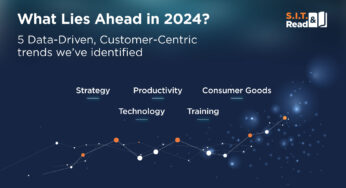People Innovation
Human Resource departments often find themselves tasked with creating a more innovative climate for their firms. That can make sense given that innovation is a people activity. It’s a skill, not a gift, and it can be taught and learned like any other business skill. And it is usually team-based.
My advice to HR leaders? Experience innovation close to home first. Use innovation tools on actual people or HR systems before venturing out to the broader organization. This has the effect of making true believers out of the HR team, it gives them a handy reference point for other departments to benchmark, and it yields creative new approaches to traditional HR processes. How?
Using the five templates of Systematic Inventive Thinking, here are examples of pre-inventive forms within the HR realm. The key is to envision the pre-inventive form, then find a useful role or benefit for it.
- SUBTRACTION: Your training programs have no faculty. Why? What would be beneficial about it?
- TASK UNIFICATION: Offer letters to new hires have an important additional role during the first year of employment? What is that role, and how could it help the organization?
- MULTIPLICATION: Employees receive two paychecks each payday, but they are different in some way. How are they different? What would be the benefit?
- ATTRIBUTE DEPENDENCY: Year-end bonuses do NOT change based on performance or other factors. Why? How could it motivate employees?
- DIVISION: New employees are hired first, THEN recruited into the organization? How would this work and why would it be useful?
The real trick in using this method correctly is to envision a pre-inventive form that doesn’t seem to make sense at first. Then, using a cross-functional team, you outline specific benefits that could be derived for the HR department, the company at large, or some other entity. Ask yourself: is it feasible? How could the idea be modified to make it even more beneficial or feasible?
Another approach is to use innovation templates on specific employees – create ideas that innovate their life or career. Here are five more examples of pre-inventive forms at the individual level:
- SUBTRACTION: The employee no longer has a budget but still has to accomplish their goals. Why? What would be beneficial about it?
- TASK UNIFICATION: The employee’s office space now performs an additional role. What is that role, and how could it help the organization?
- MULTIPLICATION: The employee has two bosses, but they are different in some way. How are they different? What would be the benefit?
- ATTRIBUTE DEPENDENCY: The employee works fewer hours the more she produces? How would this work? What would be the benefit?
- DIVISION: The employee no longer works from 8 to 5, but has to work at different times. Why? How could this be useful?
Re-invent others by re-inventing yourself first.
Recent Posts
Innovation Behavior
Innovation is a skill, not a gift. Top organizations drive growth by nurturing and investing…
Should you learn TRIZ? – Yes. ….and No.
Are you in the world of problem solving? Is problem solving a skillset you have…
What Lies Ahead in 2024?
5 Data-Driven, Customer-Centric trends we’ve identified This is not just another conventional forecast. Over nearly…
Fork or Chopsticks – Which Innovation Tools Do You Use?
Imagine a chef, who only uses a spoon. Imagine a dentist, who only uses a…
The Moat Mentality: Exploring New Frontiers in Innovation Methodologies
In investing and business strategy, we often speak in terms of moats. Warren Edward Buffett…
Was it a Breakthrough or an Adjacency?
This year, P&G’s Febreze celebrates its silver anniversary as a brand. But not all 25…





